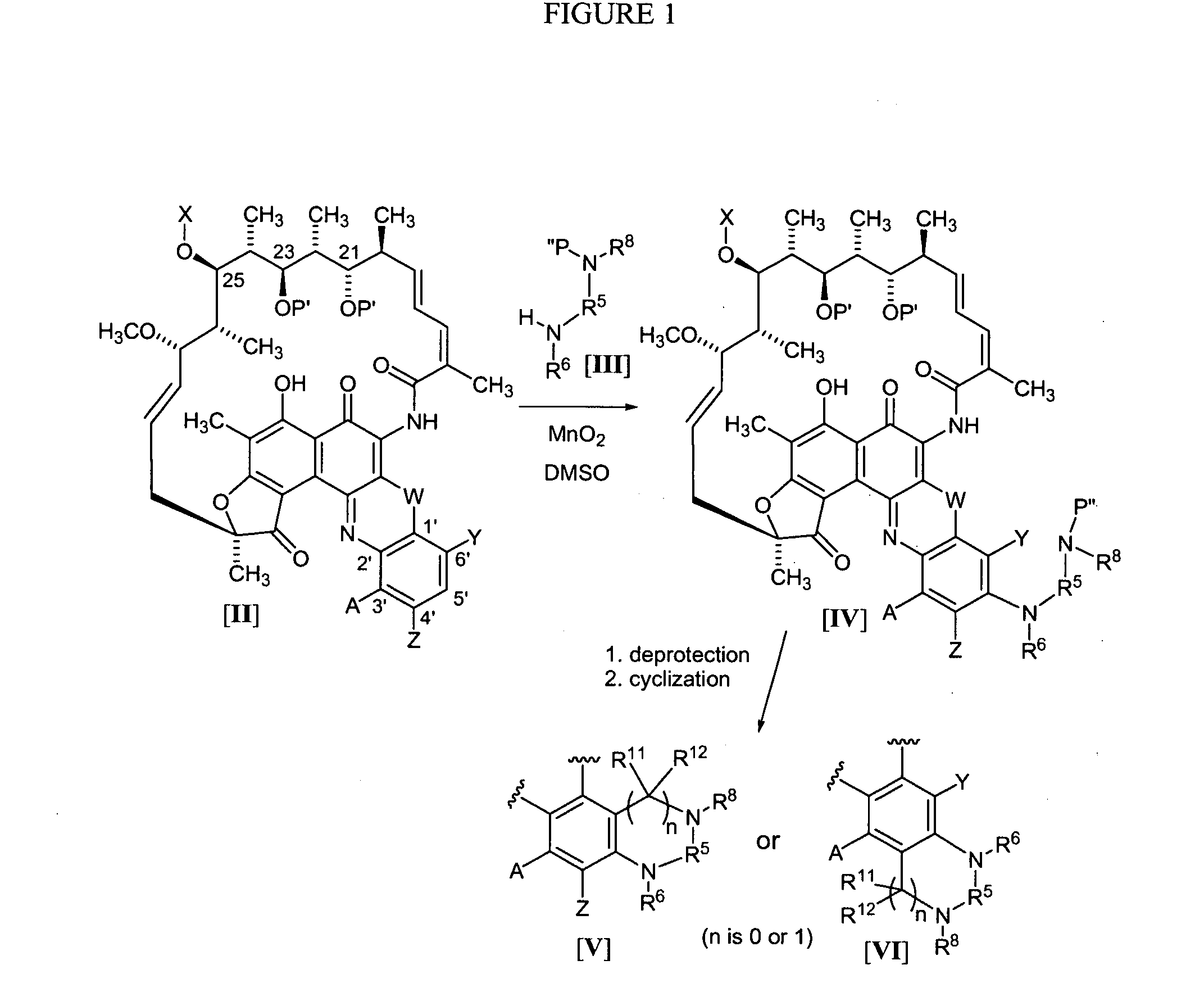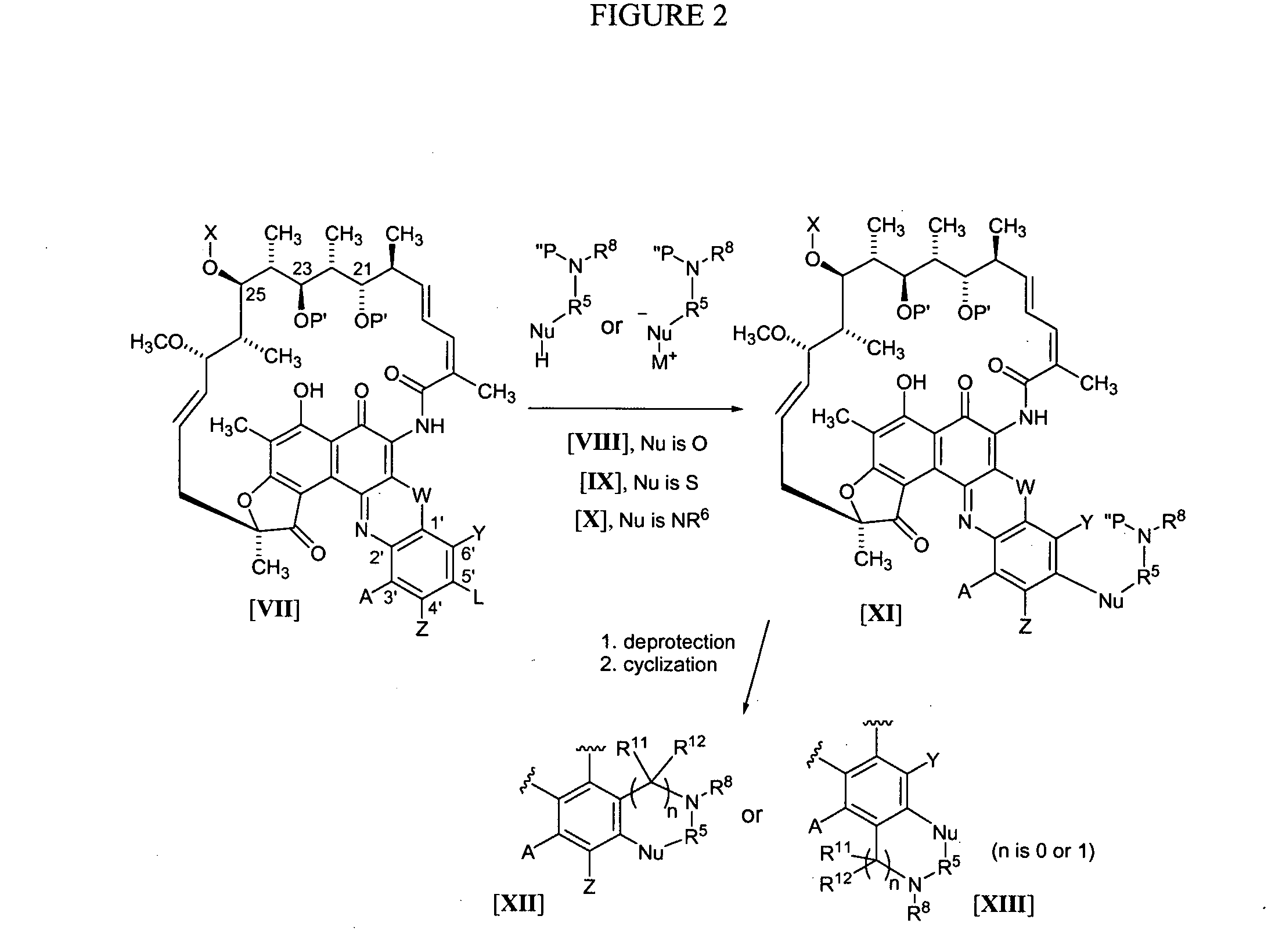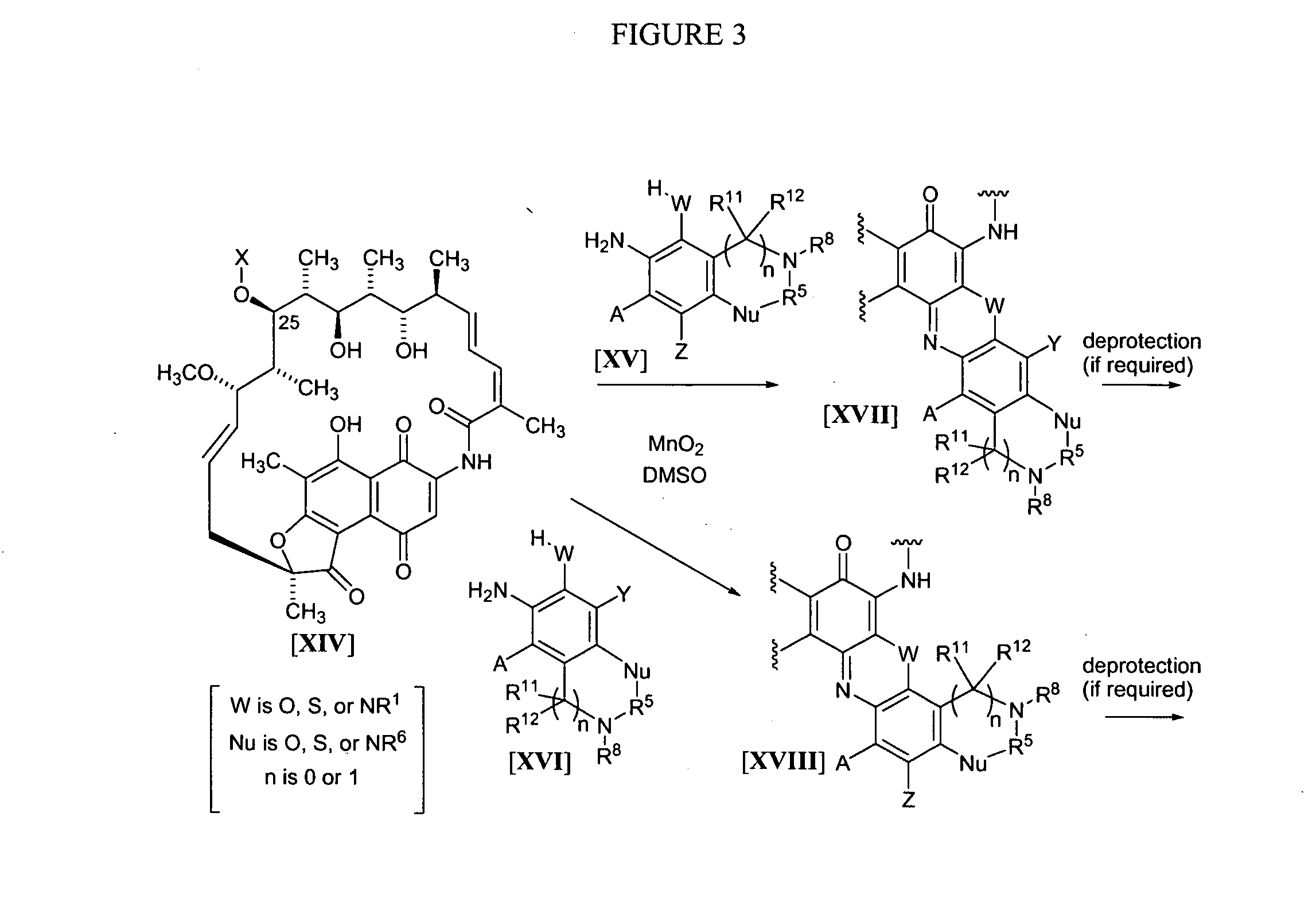Rifamycin analogs and uses thereof
a technology of rifamycin and analogs, applied in the field of rifamycin analogs, can solve the problem that infections that had been readily treatable by chemotherapy may no longer exist, and achieve the effect of reducing the number of side effects and reducing the risk of side effects
- Summary
- Abstract
- Description
- Claims
- Application Information
AI Technical Summary
Benefits of technology
Problems solved by technology
Method used
Image
Examples
example 1
General Coupling Procedure
[0162] The synthesis of benzoxazinorifamycin, benzthiazinorifamycin, and benzdiazinorifamycin analogs of the present invention can all proceed through the same general route as shown in FIG. 1, using the general methods disclosed in U.S. Pat. No. 4,965,261 for the attachment of amines to the 5′-position. In this scheme, rifamycin azaquinones of the formula II are dissolved in a suitable solvent, for example, DMSO, and reacted with amines or the formula III in the presence of manganese dioxide for several hours at room temperature to form azaquinones of the formula IV. If required, the azaquinones of the formula IV can be further reacted with deprotection reagents to remove X at the 25-position, P′ at the 21 and 23 positions, any protecting group on Y or Z, and / or any P″ protecting group introduced with amines of the formula III. Once an amine of formula III has been attached to the benzoquinone and, if required, the necessary protecting groups removed, cyc...
example 2
General Deacetylation Procedure
[0166] As shown in FIG. 4, compounds of the formula XIX (˜100 mmol) were dissolved in methanol (5 mL) and treated with saturated sodium hydroxide in methanol solution (5 mL) for between 0.5 h to 3 h at rt. The reaction mixture was then poured into saturated ammonium chloride solution and extracted with chloroform. The organics were washed with water (2×) and dried over Na2SO4. Filtration, followed by removal of the solvent in vacuo, yielded des-acetyl products of the formula XX. If desired, these products were purified via flash chromatography (silica gel) using an appropriate solvent system, such as 1-10% methanol in methylene chloride.
example 3
Synthesis of Compound 1 (Tandem Coupling)
[0167] The title compound was prepared using a general coupling procedure of Example 1. Accordingly, as shown in FIG. 5, compound 100 (1.20 g, 1.31 mmol), N,N′-dimethylethyleneaminediamine (0.6 mL, 5 mmol), and manganese (IV) oxide (840 mg, 9.7 mmol) in 10 mL of DMSO were stirred at room temperature for 36 hours. The reaction was diluted with methylene chloride and filtered through Celite™. The resulting solution was washed with water (3×) and dried over sodium sulfate. Filtration, followed by removal of the solvent in vacuo yielded a blue residue that was purified via MPLC (silica gel, gradient 0-2%, methanol in methylene chloride) to yield compound 1 as a blue solid (286 mg, 0.323 mmol, 25% yield); ESI (+) MS: 885 (M+H+); TLC: Rf=0.35 (19:1, methylene chloride:methanol, Whatman MK6F, 60 angstrom); UV / Vis: λmax=670.8 nm; and Mp 276-277° C.
PUM
| Property | Measurement | Unit |
|---|---|---|
| time | aaaaa | aaaaa |
| optical density | aaaaa | aaaaa |
| pharmaceutical composition | aaaaa | aaaaa |
Abstract
Description
Claims
Application Information
 Login to View More
Login to View More - R&D
- Intellectual Property
- Life Sciences
- Materials
- Tech Scout
- Unparalleled Data Quality
- Higher Quality Content
- 60% Fewer Hallucinations
Browse by: Latest US Patents, China's latest patents, Technical Efficacy Thesaurus, Application Domain, Technology Topic, Popular Technical Reports.
© 2025 PatSnap. All rights reserved.Legal|Privacy policy|Modern Slavery Act Transparency Statement|Sitemap|About US| Contact US: help@patsnap.com



